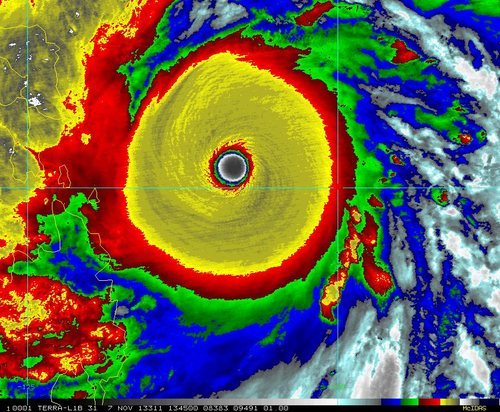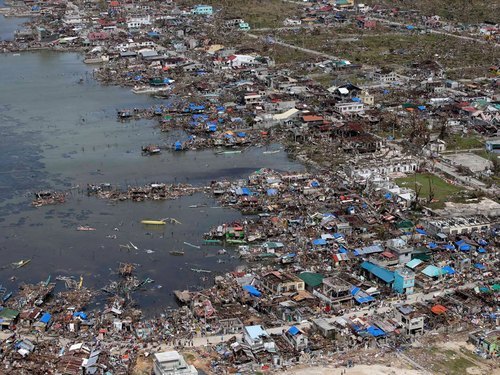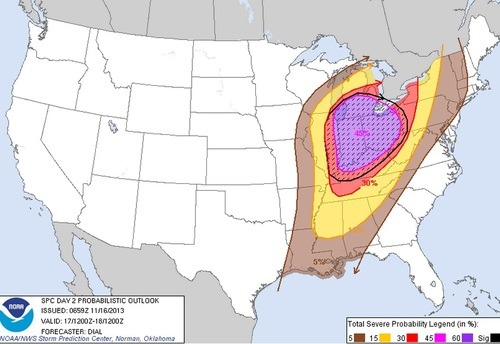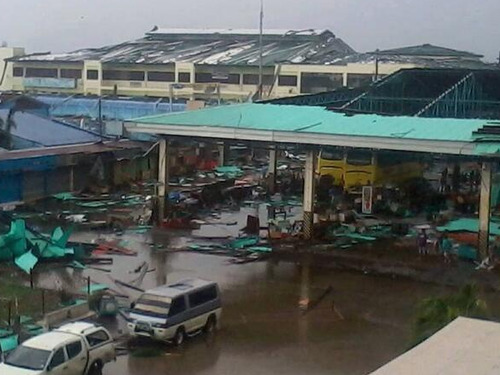EIWN’s Top 3 Events of 2013
This past year several historical events have taken place – from right here in Canada, to Tornado Alley, to half-way across the globe in the Philippines. The post this week will feature a countdown of this year’s top 3 severe weather events.
3. Alberta Floods – June 19th to June 22nd
This event was fuelled by moisture from the Gulf of Mexico that was able to stream all the way north to southern Alberta, where an upper low was positioned. The situation would not have been as bad if a blocking pattern wasn’t in place further north, stalling the upper level low over southern Alberta. As all this moisture was pushed up the Rockies, condensed, and further, fell as precipitation leading to significant flooding along the foothills. Extreme rainfall amounts were recorded in Canmore at 220mm (half their annual rainfall) and High River which recorded 325mm, both in less than two days.

This severe weather event was the costliest in Canadian history, reaching two billion dollars in damages. An estimated 100,000 residents were forced to evacuate, a total of 32 communities were in a state of emergency and 2,000 armed forces were brought in to help out. Unfortunately, four people lost their lives in this event.
A few more facts from the event:
- The Saddledome (home of the Calgary Flames hockey team) flooded up to the 10th row of seats
- Over 1,000km of roads were destroyed
- Calgary received 88% of their average monthly precipitation within 48 hours
2. Moore Tornado – May 20th
On the afternoon of May 20th, one of the worst scenarios possible occurred; tornadic supercells spawned a strong tornado on the ground and tore through a city of 50,000 people. Conditions were ideal for supercells to develop as the CAPE was in the 5000J/kg, shear was in the 50kt range and a dryline trigger was present. The city of Moore, Oklahoma took a direct hit from an EF-5 tornado. The massive tornado, which had a maximum width of 2.1km, raced across Oklahoma for 27km before it eventually lifted after passing through Moore.

Damage in Moore was severe as whole neighbourhoods were swept off the map. An estimated 1,150 homes were destroyed with a total of two billion dollars in damages. The tornado also took the lives of 24 people and injured 377, but the toll could have been significantly higher had the NWS not put out a strongly worded warning for the Oklahoma City/Moore area a good 15 minutes before the tornado arrived.
Interestingly enough, 11 days later the widest tornado on record touched down in El Reno, Oklahoma measuring 4.2km in width, just 60km west of Moore. This tornado was rated an EF-3 and sadly took the lives of 8 people, including the respected researcher and storm chaser Tim Samaras.
A few significant facts from the Moore tornado:
- The Storm Prediction Center had issued a moderate risk with a 10% hatched tornado risk for the area that day
- A 10-ton water tank was thrown one kilometer away
- The tornado was on the ground for almost one hour
1. Super Typhoon Haiyan – November 3rd to November 11th
Our top weather story is one that is still fresh in our minds. Typhoon Haiyan (also known as Typhoon Yolanda) made landfall in the Philippines as a strong category five typhoon, bearing winds of approximately 315km/h and a central pressure below 900mb. With these values, Haiyan would be the strongest tropical cyclone to ever make landfall.

In total, 7,000 people perished from this storm, with still a thousand missing, making it the deadliest typhoon on record in the Philippines. Extreme damage totaling an estimated 1.5 billion dollars occurred mainly due to wind and storm surge. Tacloban was the hardest hit city as the storm surge of 6m took out buildings over one kilometer inland. 90% of the city was reported to be destroyed.
A few significant facts from super typhoon Haiyan:
- 11 million people were affected by Haiyan
- Haiyan made a second landfall in Vietnam as a category one typhoon
- 4 typhoons made landfall in the Philippines in 2013 (Utor, Nari, Krosa, Haiyan)




